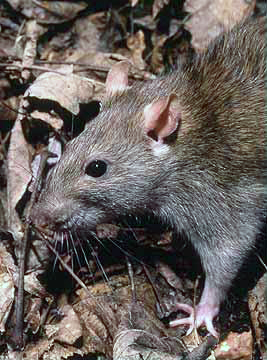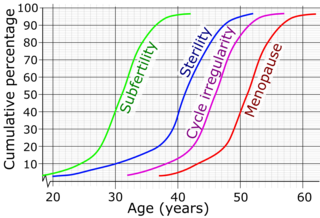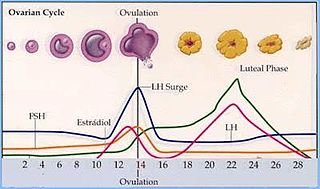
Rats are various medium-sized, long-tailed rodents. Species of rats are found throughout the order Rodentia, but stereotypical rats are found in the genus Rattus. Other rat genera include Neotoma, Bandicota and Dipodomys.

The black rat, also known as the roof rat, ship rat, or house rat, is a common long-tailed rodent of the stereotypical rat genus Rattus, in the subfamily Murinae. It likely originated in the Indian subcontinent, but is now found worldwide.

The brown rat, also known as the common rat, street rat, sewer rat, wharf rat, Hanover rat, Norway rat and Norwegian rat, is a widespread species of common rat. One of the largest muroids, it is a brown or grey rodent with a body length of up to 28 cm (11 in) long, and a tail slightly shorter than that. It weighs between 140 and 500 g. Thought to have originated in northern China and neighbouring areas, this rodent has now spread to all continents except Antarctica, and is the dominant rat in Europe and much of North America. With rare exceptions, the brown rat lives wherever humans live, particularly in urban areas.

In vitro fertilisation (IVF) is a process of fertilisation in which an egg is combined with sperm in vitro. The process involves monitoring and stimulating a woman's ovulatory process, then removing an ovum or ova from her ovaries and enabling a man's sperm to fertilise them in a culture medium in a laboratory. After a fertilised egg (zygote) undergoes embryo culture for 2–6 days, it is transferred by catheter into the uterus, with the intention of establishing a successful pregnancy.

Family planning is the consideration of the number of children a person wishes to have, including the choice to have no children, and the age at which they wish to have them. Things that may play a role on family planning decisions include marital situation, career or work considerations, financial situations. If sexually active, family planning may involve the use of contraception and other techniques to control the timing of reproduction.
Fertility in colloquial terms refers the ability to have offspring. In demographic contexts, fertility refers to the actual production of offspring, rather than the physical capability to reproduce, which is termed fecundity. The fertility rate is the average number of children born during an individual's lifetime. In medicine, fertility refers to the ability to have children, and infertility refers to difficulty in reproducing naturally. In general, infertility or subfertility in humans is defined as not being able to conceive a child after one year of unprotected sex. The antithesis of fertility is infertility, while the antithesis of fecundity is sterility.

The lesser bandicoot rat, Sindhi rice rat, Bengal rat or Indian mole-rat is a giant rat of Southern Asia, not related to the true bandicoots which are marsupials. They can be up to 40 cm long, are considered a pest in the cereal crops and gardens of India and Sri Lanka, and emit piglike grunts when attacking. The name bandicoot is derived from the Telugu language word pandikokku, which translates loosely to "pig-rat". Like the better known rats in the genus Rattus, bandicoot rats are members of the family Muridae. Their fur is dark or (rarely) pale brown dorsally, occasionally blackish, and light to dark grey ventrally. The head-body length is around 250 mm, and the uniformly dark tail is shorter than the head-body length.
Wildlife contraceptives, sometimes referred to as wildlife fertility control, are contraceptives used to regulate the fertility of wild animals. They are used to control population growth of certain wild animals.

In biology, folliculogenesis is the maturation of the ovarian follicle, a densely packed shell of somatic cells that contains an immature oocyte. Folliculogenesis describes the progression of a number of small primordial follicles into large preovulatory follicles that occurs in part during the menstrual cycle.

Ovarian reserve is a term that is used to determine the capacity of the ovary to provide egg cells that are capable of fertilization resulting in a healthy and successful pregnancy. With advanced maternal age, the number of egg cell that can be successfully recruited for a possible pregnancy declines, constituting a major factor in the inverse correlation between age and female fertility.

Female infertility refers to infertility in women. It affects an estimated 48 million women, with the highest prevalence of infertility affecting women in South Asia, Sub-Saharan Africa, North Africa/Middle East, and Central/Eastern Europe and Central Asia. Infertility is caused by many sources, including nutrition, diseases, and other malformations of the uterus. Infertility affects women from around the world, and the cultural and social stigma surrounding it varies.

Lactational amenorrhea, also called postpartum infertility, is the temporary postnatal infertility that occurs when a woman is amenorrheic and fully breastfeeding.
Poor ovarian reserve is a condition of low fertility characterized by 1): low numbers of remaining oocytes in the ovaries or 2) possibly impaired preantral oocyte development or recruitment. Recent research suggests that premature ovarian aging and premature ovarian failure may represent a continuum of premature ovarian senescence. It is usually accompanied by high FSH levels.

Birth control, also known as contraception, anticonception, and fertility control, is the use of methods or devices to prevent unintended pregnancy. Birth control has been used since ancient times, but effective and safe methods of birth control only became available in the 20th century. Planning, making available, and using human birth control is called family planning. Some cultures limit or discourage access to birth control because they consider it to be morally, religiously, or politically undesirable.
Female fertility is affected by age and is a major fertility factor for women. A woman's fertility is in generally good quality from the late teens to early thirties, although it declines gradually over time. Around 35, fertility is noted to decline at a more rapid rate. At age 45, a woman starting to try to conceive will have no live birth in 50–80 percent of cases. Menopause, or the cessation of menstrual periods, generally occurs in the 40s and 50s and marks the cessation of fertility, although age-related infertility can occur before then. The relationship between age and female fertility is sometimes referred to as a woman's "biological clock."

Induced ovulation occurs in some animal species that do not ovulate cyclically or spontaneously. Ovulation can be induced by externally-derived stimuli during or before mating, such as sperm, pheromones, or mechanical stimulation during copulation.

4-Vinylcyclohexene dioxide (VCD) is an organic compound that contains two epoxide functional groups. It is industrially used as a crosslinking agent for the production of epoxy resins. It is a colourless liquid. It is an intermediate for synthesis of organic compounds.
Human reproductive ecology is a subfield in evolutionary biology that is concerned with human reproductive processes and responses to ecological variables. It is based in the natural and social sciences, and is based on theory and models deriving from human and animal biology, evolutionary theory, and ecology. It is associated with fields such as evolutionary anthropology and seeks to explain human reproductive variation and adaptations. The theoretical orientation of reproductive ecology applies the theory of natural selection to reproductive behaviors, and has also been referred to as the evolutionary ecology of human reproduction.
SenesTech, Inc. is an agricultural biotechnology life-sciences company, specializing in fertility management as a form of pest control. The company's primary product, ContraPest is designed to make brown and black rats infertile. SenesTech is headquartered in Phoenix, Arizona.
Female fertility agents are medications that improve female’s ability to conceive pregnancy. These agents are prescribed for infertile female who fails to conceive pregnancy after 1-year of regular and unprotected sexual intercourse. The following will cover the advancements of female fertility agents, major causes of female infertility. Next, it emphasizes on common female fertility agents in terms of their mechanism of action, side effects, fetal consideration and clinical application and ended up by the introduction of supplements and herbal medicines for female infertility.













